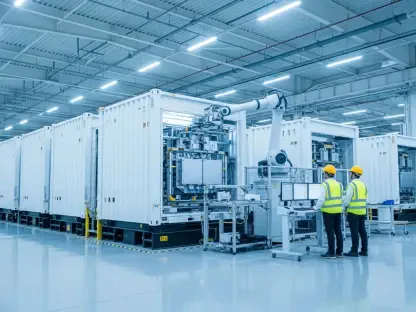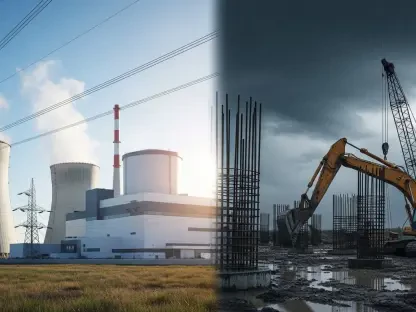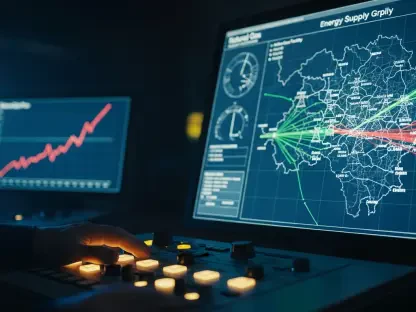I’m thrilled to sit down with Christopher Hailstone, a renowned expert in energy management and grid reliability, to discuss the transformative potential of battery storage in the Midcontinent Independent System Operator (MISO) region. With his deep knowledge of renewable energy integration and electricity delivery, Christopher provides invaluable insights into how emerging technologies are shaping the future of our power systems. Today, we’ll explore the significant cost savings and grid benefits that battery storage could bring to MISO, the current state of storage deployment compared to other regions, and the factors driving this trend. Let’s dive into this fascinating conversation about the role of batteries in building a more efficient and sustainable energy landscape.
How does the recent study by the American Clean Power Association highlight the impact of adding battery storage to the MISO grid?
The study, released on July 29, 2025, paints a compelling picture of how battery storage can revolutionize the MISO system. It suggests that adding around 11 gigawatts of battery capacity could save a staggering $27 billion in system costs by 2035. This isn’t just a small tweak—it’s a game-changer for how we manage energy in the region, reducing strain on the grid and cutting expenses for utilities and consumers alike by leveraging low-cost electricity during off-peak times.
Can you explain how batteries contribute to lowering costs within the MISO footprint?
Absolutely. Batteries work by storing excess electricity when it’s cheap and abundant—often during times of high renewable generation like sunny or windy periods—and then releasing it during peak demand hours when prices spike. This smoothing out of supply and demand helps avoid the need for expensive, last-minute power purchases or firing up costly backup plants. The report estimates that without this storage, average wholesale power prices could rise by $1.40 per megawatt-hour by 2035, adding about $1.2 billion to overall costs. Batteries essentially act as a buffer, keeping prices more stable.
What does the study reveal about the effect of battery storage on peak power prices in MISO by 2035?
The numbers are striking. The study modeled a scenario for a typical day in May 2035, showing that with 11 gigawatts of battery storage, peak power prices would reach $85.90 per megawatt-hour. Without those batteries, prices would skyrocket to $245.30 per megawatt-hour. That’s a massive difference, illustrating how batteries can dampen price volatility during high-demand periods by supplying stored energy exactly when it’s needed most.
How does MISO’s current battery storage capacity compare to other regions, and what growth is on the horizon?
Right now, MISO lags behind some other regions. It has about 125 megawatts of battery storage on its system, which is tiny compared to the California Independent System Operator, which had around 13 gigawatts by the end of last year. MISO’s peak load is much larger at 127 gigawatts versus California’s 52 gigawatts, so there’s clearly room to grow. The good news is that the report expects MISO to ramp up to nearly 1 gigawatt of storage by next spring, signaling a rapid shift toward embracing this technology.
The study mentions a significant backlog of energy projects waiting to connect to the MISO grid. Can you shed light on the scale of this pipeline?
It’s quite impressive. MISO’s interconnection queue currently includes about 60 gigawatts of standalone battery storage projects waiting to be connected. On top of that, there’s roughly 175 gigawatts of solar and 42 gigawatts of wind capacity in the pipeline. This backlog shows a huge interest from developers in bringing clean energy and storage online, though it also highlights the challenge of integrating all these resources into the grid efficiently.
What specific factors are making battery storage such a promising solution for MISO right now?
Several trends are aligning to make this the perfect moment for battery storage in MISO. First, you’ve got aging thermal power plants retiring, which creates a gap in capacity that batteries can help fill. Then there’s rising electricity demand as more sectors electrify, alongside a push for high renewable deployment. Add to that the falling costs of battery systems and strong federal clean energy tax credits, and you’ve got a recipe for rapid adoption. Batteries are also relatively easy to deploy compared to building new power plants, and they can stack revenues from energy arbitrage, ancillary services, and capacity payments, making them economically attractive.
Looking ahead, what is your forecast for the role of battery storage in shaping MISO’s energy future?
I’m very optimistic. Battery storage is poised to become a cornerstone of MISO’s grid strategy over the next decade. As costs continue to drop and more projects move from the interconnection queue to operation, we’ll see batteries playing a critical role in balancing renewables, stabilizing prices, and enhancing grid reliability. I think by 2035, we could see storage capacity far exceeding the 11 gigawatts in this study, especially if policies and market structures continue to support innovation. It’s not just about cost savings—it’s about building a more resilient and sustainable energy system for the entire region.









